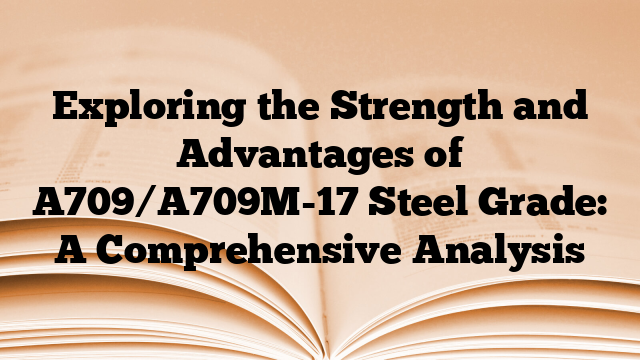There are several standards and codes that govern the properties and usage of steel grades, including the A709/A709M-17 steel grade. In this comprehensive analysis, we will explore the strength and advantages of this particular steel grade.
The A709/A709M-17 steel grade is a structural steel commonly used in bridge construction. It is categorized as a high-strength, low-alloy (HSLA) steel grade, which means it offers excellent mechanical properties while also being cost-effective.
One of the key advantages of the A709/A709M-17 steel grade is its high strength. It has a minimum yield strength of 485 MPa (70 ksi) and a minimum tensile strength of 585 MPa (85 ksi). This makes it suitable for use in various structural applications where strength is a critical factor, such as in bridge beams and girders.
Additionally, the A709/A709M-17 steel grade offers good ductility and toughness, allowing it to withstand dynamic loading conditions and impact forces. This is crucial in bridge construction, as bridges are subjected to heavy loads and external forces.
Another advantage of the A709/A709M-17 steel grade is its excellent weldability. It can be easily welded using common welding methods, such as shielded metal arc welding (SMAW) and gas metal arc welding (GMAW). This allows for efficient and cost-effective fabrication and construction processes.
The A709/A709M-17 steel grade also exhibits good corrosion resistance, which is essential for structures exposed to outdoor environments. It contains alloying elements such as copper, phosphorus, and chromium, which enhance its resistance to corrosion and atmospheric conditions.
In conclusion, the A709/A709M-17 steel grade is a high-strength, low-alloy structural steel that offers excellent mechanical properties, weldability, and corrosion resistance. These characteristics make it a suitable choice for bridge construction and other structural applications requiring strength and durability.

